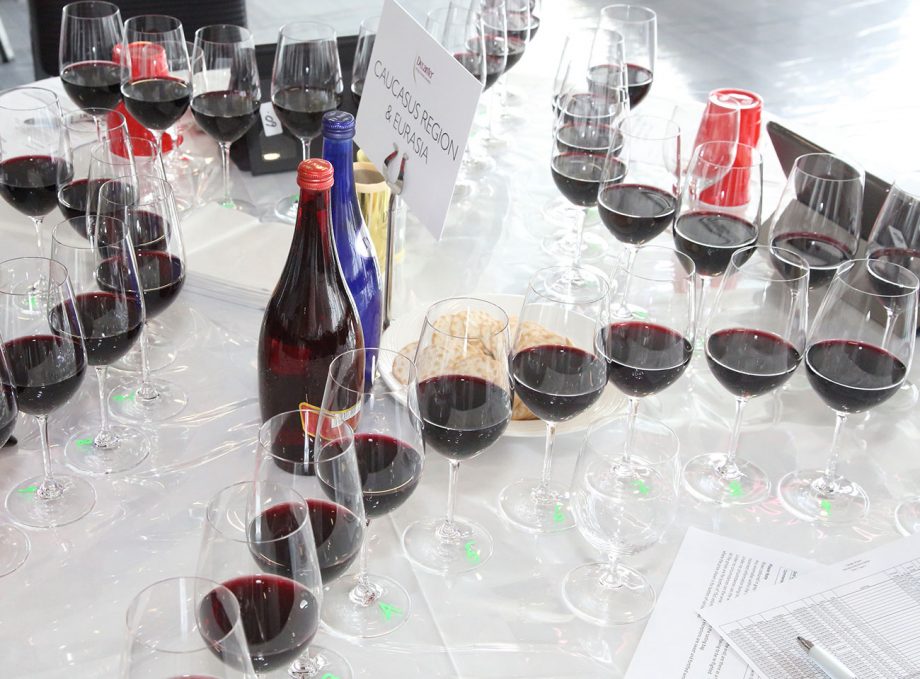
I want to say from the outset I am not a Sauvignon Blanc drinker – too much freshly cut green grass and asparagus for me but I do know many of you and your partners do not mind this style.
So 53 New Zealand Sauvignon Blancs (using any level of barrel fermentation or maturation) submitted their latest release for assessment by three MW’s. I have turned to them for tasting notes.
Out of the 53 wines submitted only 3 were classified as outstanding and 18 were highly recommended. A tough result so you will get a good heads up on the best that NZ can offer.
Marlborough is the spiritual home of New Zealand Sauvignon, representing 89% of the country’s plantings, and its dominance was reflected in this tasting, accounting for three-quarters of entries.
There were some sublime examples: Cloudy Bay’s Te Koko, Greywacke’s Wild Sauvignon and Pā’s Oke. All were different providing interplay of the relationship between Sauvignon Blanc and oak.
When you put Sauvignon Blanc in oak you are compromising the high aromatics. Getting it right is a certainly a challenge but when you do get it right it’s very nice. The problem is that the mass produced commercial styles that land here seem to have educated the Aussie consumers palate in the wrong direction and because of that have the same style.
The use of new oak currently plays a minor role in the most successful oak-influenced Sauvignon Blanc styles. Older barrels are usually chosen for their contribution to texture rather than flavour. Barrel fermentation followed by maturation tends to produce a more harmonious expression.
There were just three wines that took a leaf out of the Bordeaux (and Margaret River) book, blending Semillon with the Sauvignon Blanc: Te Mata’s Cape Crest, Seresin’s Marama and Hans Herzog’s Sur Lie which included a small splash of Semillon.
You may recall that Margaret River tried all different percentages of a Semillon/Sauvignon blend and some makers are still struggling to get the combination right.
People in my view want clean Sauvignon Blanc, but if it’s got oak and complexity they are lost. You really need to have it with food, which is not what New Zealand Sauvignon Blanc is necessarily known for.
These styles are not New Zealand’s bread and butter, but there is a diverse array of aromatics and textures for you to consider.
Top New Zealand oaked Sauvignon Blancs from the panel tasting:
Cloudy Bay Te Koko Sauvignon Blanc 2018
Has notes of blackcurrant, nectarine and green capsicum which come together harmoniously in this light-bodied, crisp and vivacious Sauvignon Blanc.
This has evolved beautifully into an elegant, buttery nose with notes of lemon and citrus peel, while restrained acidity fuels a lovely, lingering finish.
There is a good overall balance here and it has held up very well in bottle, with a perfectly-pitched oak influence that has not swamped the fruit.
Drinking Window 2019 – 2023. 96/100. $49.95
Greywacke Wild Sauvignon Blanc 2019
Greywacke (pronounced ‘Greywacky’) is the Marlborough label of Kevin Judd, one of the region’s pioneer winemakers after having directed the first 25 vintages at Cloudy Bay as their founding winemaker.
This was another Sauvignon in the tasting to have a creamy palate, which fills out with tangerine, vanilla and spice.
Beautiful style. It’s balanced by appley acidity and good intensity.$28.00
One MW said: hugely aromatic – reminiscent of ice cream cornets, nougat and vanilla. The beautifully textured and rounded palate offers plenty of concentration.
Another: flinty on the nose, before flowing beautifully on the palate, some stone fruit and dried fruit in the background. Stunning. And: creamy, rich on the nose, the palate boasts a satisfying depth of gently grassy fruit.
Drinking Window 2019 – 2022. 93/100. $32.00
Blind River Sauvignon Blanc Awatere Valley

Classic gooseberry aromas welcome a vibrant yet rounded palate, enlivened by a flush of fresh acidity and well-judged oak.
Still very youthful.
Perhaps a bit over priced.
Drinking Window 2019 – 2021. 92/100. $58.00
Mt Difficulty, Sauvignon Blanc, Bannockburn, 2018

Admirably pure and precise.
A delightful interplay between its freshness of fruit and finely-poised oak-derived characters.
But again you are paying top dollar for this.
Great example from Central Otago though.
Drinking Window 2019 – 2021. 92/100. $60.00
Craggy Range, Te Muna Sauvignon Blanc, Martinborough, 2018

Bright and perky.
Offers notes of passionfruit, lime and gooseberry wreathed in fine, elegant acidity.
Flavoursome, but not over the top.
Good value.
Drinking Window 2019 – 2021. 91/100. $25.00
Te Mata, Cape Crest Sauvignon Blanc, Hawke’s Bay, 2018
New Zealand Sauvignon is identifiable even against the most tropical of Loire Sauvignons, even though this wine is from Hawke’s Bay rather than Marlborough.

It’s actually the intensity that stands it apart.
It has sweet notes of apricot, fresh mango and a hint of banana. Some oak influence lending woodiness to the juicy palate, with plenty of warmth and acidity.
It clearly needs more time to integrate.
Drinking Window 2019 – 2023. 91/100. $22.00
Seresin Estate, Mārama, Marlborough,

Still gradually evolving. Has overtones of baked apple and dried citrus flavours, with oak-derived elements on the still firm finish.
Serious stuff, with more to come.
Drinking Window 2019 – 2023. 91/100. $26.00
Ata Rangi, Raranga, Martinborough, Wairarapa, 2017

Easy to appreciate, bright and forward, with subtle oak, zesty acidity and a touch of spritz. Will evolve well.
Drinking Window 2019 – 2022. 90/100. $25.00
If you think New Zealand Sauvignon Blanc can only be fashioned in one style it’s time to taste the country’s leading variety in its increasingly varied interpretations. The fruity yet green style for which the country has become world famous is still a mainstay, but winemakers are now seeking to make Sauvignon Blanc that is less reliant on primary fruit aromas and more interesting texturally.
Others to consider in rating order
2018 Russian Jack Sauvignon Blanc $22.00
2018 Rapture Springs Bull Paddock $22.00
2018 Mahi Wines Marlborough $23.00
2018 Astrolabe Sauvignon Blanc $23.00
2018 Vavasour Sauvignon Blanc $25.00
2018 Lawsons Dry Hills Reserve Sauvignon Blanc $25.00
2018 Te Whare Ra Wines Sauvignon Blanc $26
2018 Villa Maria Reserve Wairau Valley Sauvignon Blanc $28
2018 Whitehaven Awatere Single Vineyard Sauvignon Blanc $28.00
2018 Dog Point Vineyards Sauvignon Blanc $29.00
2018 Villa Maria Single Vineyard Taylors Pass Sauvignon Blanc $30
2018 Saint Clair Family Estate Wairau Reserve Sauvignon Blanc $34
2018 Rapaura Springs Rohe Blind River Sauvignon Blanc $40.00
2018 Pyramid Valley Sauvignon Blanc $45.00
2018 Fairhall Downs Family Estate Sauvignon Blanc $24.00
2018 Framingham Limited Edition F-Series $25.00
2018 Blank Canvas Sauvignon Blanc $26.00
2018 Churton Sauvignon Blanc $27.00
2018 Villa Maria Reserve Clifford Bay Sauvignon Blanc $27.00
Increasingly sophisticated Sauvignon Blanc continues to emerge. If you thought you knew New Zealand Sauvignon Blanc and have previously dismissed it for being overly fruity, perhaps it’s time to think again and try some of the alternative styles that Kiwi winemakers are now dishing up. Check out the wines above which are in rating order. Google to find where you can buy.
NZ Sauvignon Blanc: The Facts
1975 First Sauvignon Blanc planted in Marlborough
1979 First Marlborough Sauvignon Blanc produced by Montana
2002 Sauvignon Blanc becomes New Zealand’s most planted variety
2018 Sauvignon Blanc covers 23,102ha, representing 60% of New Zealand’s vineyard area and 86% of exports
(Source: NZ Winegrowers Annual Report 2018)
Know your Sav Blanc vintages
2018 Hottest summer on record, leading to early ripening. Coastal regions affected by ex-tropical cylones in February, delaying harvest and elevating botrytis pressure. Ripe Sauvignon.
2017 Difficult season with a cool start and poor summer. Wet, warm and cloudy autumn created botrytis pressure. Early picked crops were the most successful.
2016 Record crop. Warm, often humid. Harvest period was dry and sunny. Excellent whites and highly attractive reds.
2015 Dry and warm. Small, low yielding crop after early frost and cool flowering. Ripe, perfumed and fully flavoured wines.
2014 Record early vintage. Dry and warm summer with little disease pressure. Excellent wines across the board.
2013 Touted as the vintage of a lifetime with a warm, incredibly dry summer and autumn. Ripe, concentrated wines across the North and South Islands.




 The results are in for the 2019 Decanter World Wine Awards. Ok, there are probably too many wine shows – particularly here in Australia – but this is the world’s largest wine competition, judged close to 17,000 wines, entered from 57 different countries. More than 280 of the world’s top wine experts tasted and debated the merits of each bottle entered. Only the top 50 were awarded the accolade of “Best in Show” of which Australian wines collected six of these placing them 3rd on the global leaderboard behind France and Spain.
The results are in for the 2019 Decanter World Wine Awards. Ok, there are probably too many wine shows – particularly here in Australia – but this is the world’s largest wine competition, judged close to 17,000 wines, entered from 57 different countries. More than 280 of the world’s top wine experts tasted and debated the merits of each bottle entered. Only the top 50 were awarded the accolade of “Best in Show” of which Australian wines collected six of these placing them 3rd on the global leaderboard behind France and Spain.







